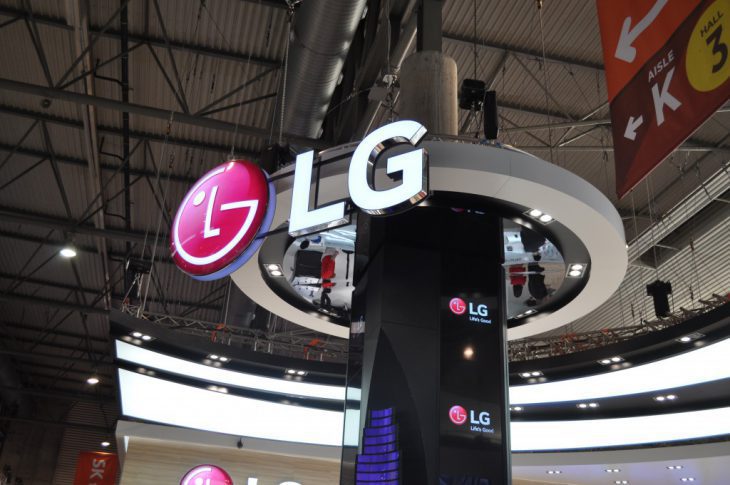
In the last few months, LG must’ve been doing some soul searching about their position in the global mobile business. Recently, their Vice Chairman Cho Sung-jin announced that the company would no longer be releasing phones yearly, and now it looks like they won’t be unveiling a new phone at Mobile World Congress next month.
LG has suffered losses in their last eleven earnings statements for their mobile division, and with that in mind I started looking at what I like about LG and what they can do to come back on top.
Scale back launches
For starters, LG is right to scale back from yearly launches of flagships. LG has been releasing their ‘G’ Series handsets around Mobile World Congress and then shifting to a ‘V’ Series launch later in the year. Let’s just say for example they scale back to a single release – but take a leaf out of Samsung’s book – and aim for a mid-year launch of a high-end phone made available in two sizes.
LG really suffered last year with Samsung taking the initial run of the flagship Qualcomm Snapdragon 835 processors. Faced with the choice of delays or launching with an older processor, LG went with the latter and suffered for it. Though the Snapdragon 821 was a capable processor, the fact that it had been superseded hurt perceptions, and for the LG G6, that killed it.
Tech-savvy, spec loving consumers immediately discounted the handset based on this. We’ve seen previously these taste-makers don’t tend to recommend phones like this to their friends and family when it comes time to buy. So with that in mind, LG should be looking at a mid-year launch to offset the possibility of Samsung (or another vendor) snapping up early stocks of next years processor.
A mid-year launch would also sit well when it comes to mind-share. The middle of the year sits in somewhat of a lull when it comes to new smartphone announcements. A flashy launch of a refined, carefully thought out handset at a time when the mobile business is generally ‘slow’ would very much work in their favour.
Design a better looking phone
Black Slabs are so yesterday.
The intimidating black monolith may be cool in a Stanley Kubrick movie, but in the phone world we’ve seen it done, and done to death by now. LG has proven they can deliver a unique, stylish and different handset with phones like the LG G4, and even the ill-fated G5 (let’s just not mention the Friends), but the blandish G6 was boring. LG needs to hit a high point again.
LG has some interesting tech, they pioneered the P-OLED screen and used it to good effect in tentpole launches in the G-Flex which was a pretty decent phone. The slightly curved look was something different, and attracted a good deal of attention.
While flexible phones are neat, LG needs to find a real point (or points) of differentiation. They’ve done this in the past. Leather backed phones, a fancy design, something that oozes shelf appeal to make people want to pick up a phone and see what it’s like. This strategy has paid dividends for Samsung with their Infinity Display, so go nuts, let’s see what you got.
Make it strong, make it known
The LG V30 has IP65/68 water and dust resistance. Just about everyone knows that because it’s become almost expected of high-end phone makers these days (Google, take note for Pixel 3). What you probably didn’t know is that it’s built to MIL-Spec standards. It’s designed to take a fall and keep on ticking – why isn’t this a headline feature? It’s not even mentioned on the LG Australia website. The mind boggles.
While you don’t want people testing out durability on their phones, it’s these sorts of features that sell phones. If your phone can take a tumble from a pocket to the floor and survive uncracked, then anyone walking into a store with a cracked screen/rear is definitely going to be looking for the phone that can compete here.
Own the Audio
LG absolutely does audio correctly. They’ve been the quiet achiever in high-end audio for the last couple of years including a Quad Digital to Analogue (DAC) in their phones (or as an add-on Friend) that has impressed most audiophiles. It’s a matter of taking this big win and running with it.
The sound quality of LG phones is very good, but could be better with front-facing speakers. It’s a matter of opinion whether the larger bezels on a phone which includes front-facing speakers is worth it, but it’s an oft-requested feature and if the buying public asks for it – do it.
While their playback is great, recording is a little talked about feature of LG phones. They’ve been doing great work with spatial audio for some time now. LG phones can record high-quality audio and it’s a very under-sung quality they should capitalise on.
There’s definitely a market for a phone which can capture high-end audio. Journalists doing interviews, podcasters, even singers, rappers and other content creators want to record something on the fly. Having a high-quality recording would be a big bonus, it’s possible they could even partner with a well known mic-brand to offer a portable external mic to make that sound even better.
Either way, Audio quality is a big thing for consumers and LG needs to make more of it.
Make the camera work
LG has been close to making a great camera in their phones for a while. The LG G4 had a great camera in it, but in more recent years, LG hasn’t really kept up. Today, the level of the camera found on the Pixel phones or Samsung’s higher-end Galaxy phones is a high bar.
LG’s camera tech has been hindered by slow response time, and slow captures. As a father, the disappointment of not being able to whip your phone out and snap a good shot of your child is disappointing. Finding a blurred mess, or worse not even being able to capture anything because the camera app is still loading is annoying to say the least.
At least LG’s camera app design is good though, it’s simple and easy to use but finding it slow is not the way to go if the customer is not happy with the speed.
Quality and speed. That’s what you want. No cruft, no gimmicks, just take the basics of the Camera API2, make it work with your dual-lens sensors and go for it. Image processing is primary, once you get that right it’s all gravy.
Software – LG UX is not working
We get it. There’s some markets that love the cutesy, cartoonish look of LG UX. However, to sell a phone outside of Asia – where LG wants to really succeed – the company needs to accept that LG UX isn’t working. It’s time to scale it back. LG UX has become too bloated and doesn’t work as well as it used to in the days of the original Optimus G which ran like greased lightning.
Samsung has scaled back their TouchWiz interface to a smooth looking (and smoother running) experience that seems only to be different on the surface to stock Android, despite some decent underpinnings which include their Knox security software and other changes. Other companies like HMD Global have really scaled up their success with a line of phones that relies on stock Android which they can simply bundle an app or two with and release, it means faster updates and a faster UI overall – and judging by customer response, stock Android works.
I’m not saying LG shouldn’t stick some basic value added utilities to the underlying OS. Stick LG Pay, your Audio recording and tuning software on, but leave the rest alone – at least until you can slowly add in optimised software enhancements that adds to the customer experience.
Stock Android – or something that isn’t bloated and slow – and fast updates is what buyers of Android phones are looking for. Hand over the reigns to Google, release it as stock, or as close to as possible. A tier one manufacturer doing this is a big step, but one that I’m sure would pay dividends.
Manage customers experience
As part of the process of scaling back from a yearly launch cycle, LG has the opportunity to engage with their customers longer term. This means they have to fix some of perceptions that some have of the company and their phones. To date, a number of issues with bootloops on LG phones have hit a few customers, there’s a lot more customers who’ve never encountered these issues, but a small yet vocal minority are boisterous in decrying LG any time they launch a new device.
Bootloops happen, but LG seems to have had more than their fair share. To avoid this they should be working out what has gone wrong on these devices and make it right. LG has the engineering chops to make it right, so basically they need to do that.
In a nutshell, LG please do this:
Scale it back to a once a year release. Make the phone look good on the outside. Make it strong and make it run reliably and like greased lightning on the inside. Concentrate on taking great photos in a timely manner and continue to make the phone sound awesome.
It’s that simple. LG has the makings of a great phone maker that could capture a lot of market, and at their scale they could go global in a heartbeat.
I’ve loved LG phones in the past, but it’s been a lax few years and I want to love them again. Eleven straight financial losses in the mobile division speaks volumes. What they’re doing is not working. It’s time to stop, take stock and try again with a different strategy.




